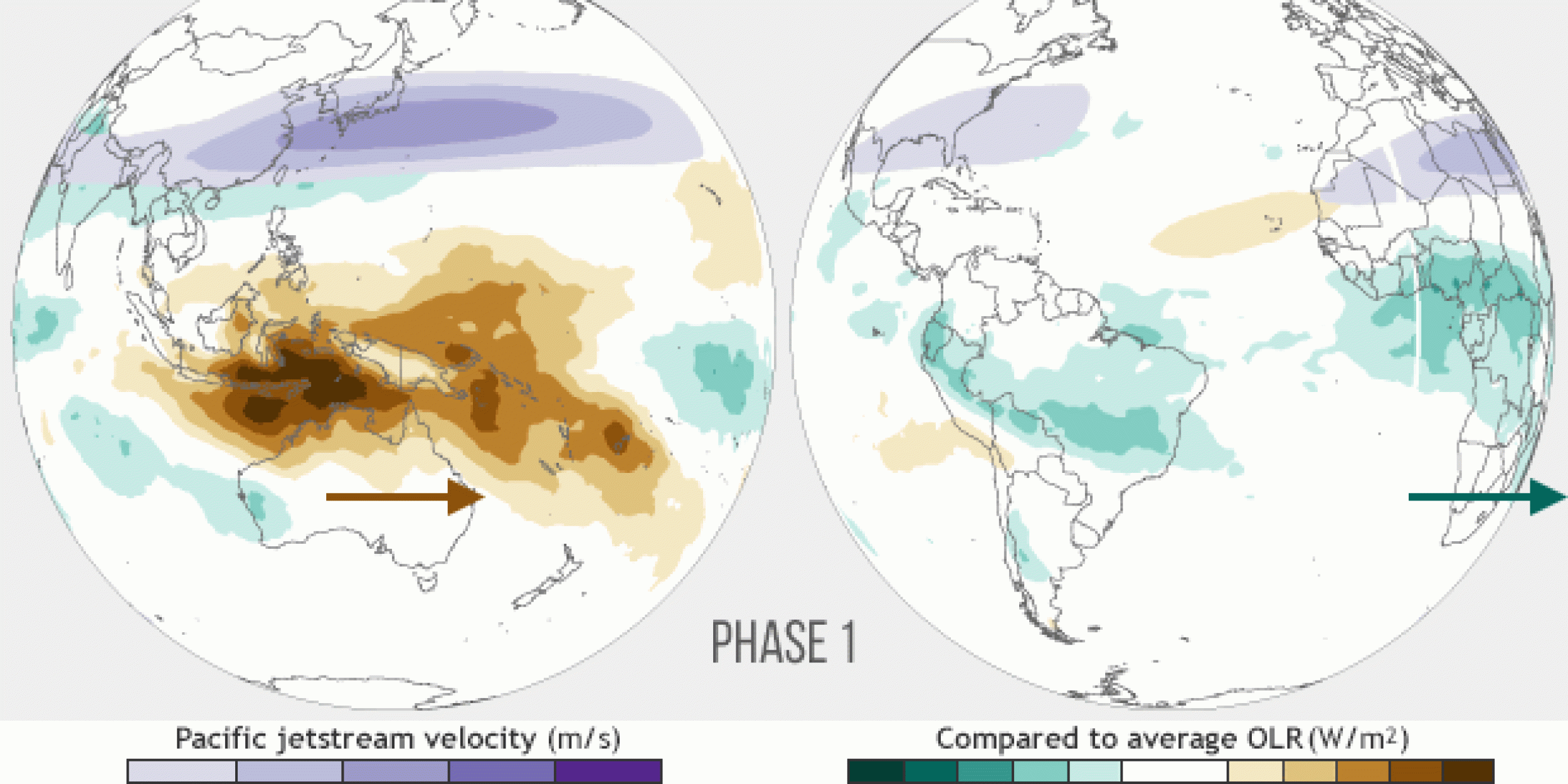The Madden-Julian Oscillation (MJO) is an eastward moving disturbance of clouds, rainfall, winds, and pressure located in the tropical longitudes, which can drive atmospheric circulation around the planet. On average, this atmospheric disturbance travels across the tropics and returns to its initial starting point every 30 to 60 days. The MJO consists of two phases; an enhanced rainfall stage and a suppressed rainfall stage and is the leading source of global subseasonal predictability; however, many dynamical forecasting systems struggle to predict MJO propagation through the Maritime Continent. In a new Journal of Geophysical Research: Atmospheres, Matthew Janiga, and MAPP Collaborators Hyemi Kim and Kathy Pegion analyzed MJO prediction skill, propagation processes, and mean state biases in reforecasts from models participating in the Subseasonal Experiment (SubX) and Subseasonal to Seasonal (S2S) prediction projects. It was found that these models’ representation of MJO propagation through the Maritime Continent failed to predict MJO convection, associated circulations, and moisture advection processes beyond 10 days. It was found that the following variables may have been associated with the biases in the MJO propagation across the Indo-Pacific: a drier low troposphere, excess surface precipitation, more frequent occurrence of light precipitation rates, and a transition to stronger precipitation rates at lower humidity than in observations. This indicates convection occurred too frequently in the models when there was low tropospheric moisture, likely due to the representation of entrainment.
———————————————————————————————–
About MAPP
The Modeling, Analysis, Predictions, and Projections (MAPP) Program is a competitive research program in NOAA Research’s Climate Program Office. MAPP’s mission is to enhance the Nation’s and NOAA’s capability to understand, predict, and project variability and long-term changes in Earth’s system and mitigate human and economic impacts. To achieve its mission, MAPP supports foundational research, transition of research to applications, and engagement across other parts of NOAA, among partner agencies, and with the external research community. MAPP plays a crucial role in enabling national preparedness for extreme events like drought and longer-term climate changes. For more information, please visit www.cpo.noaa.gov/MAPP.



